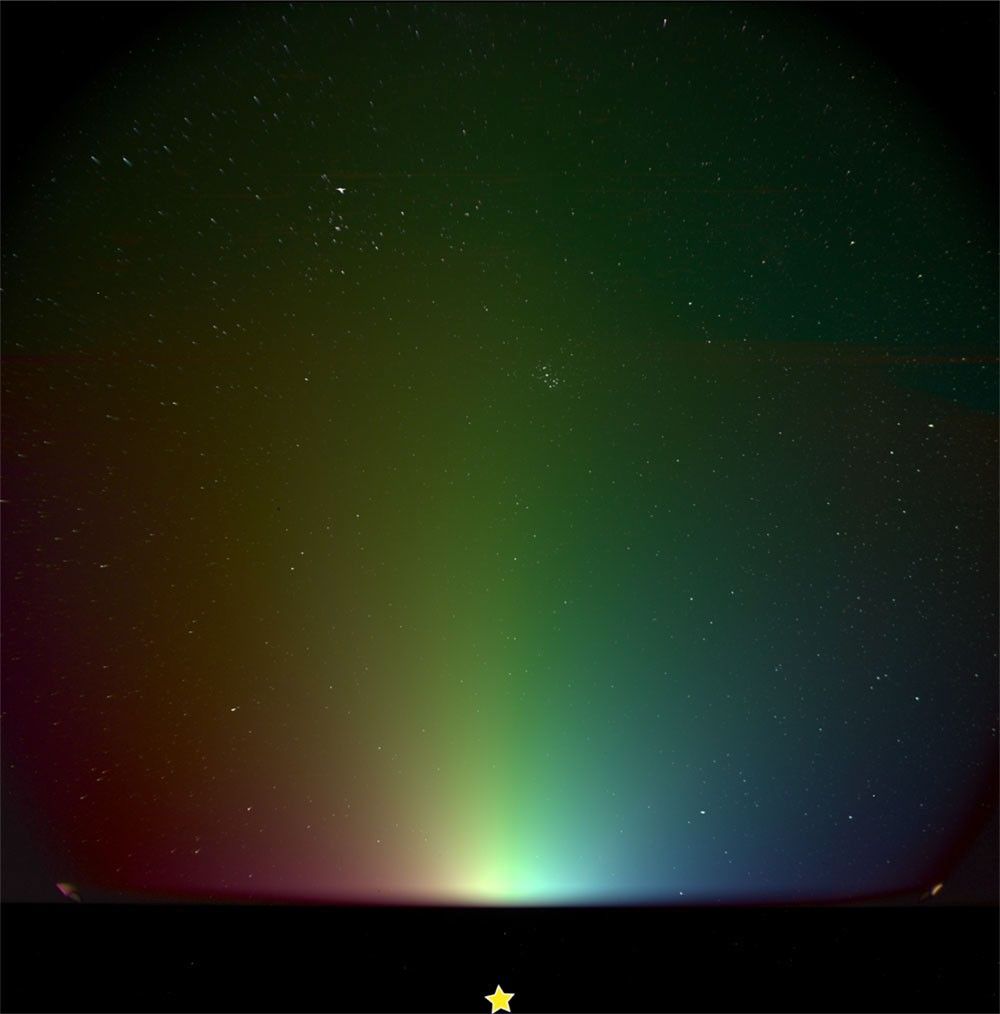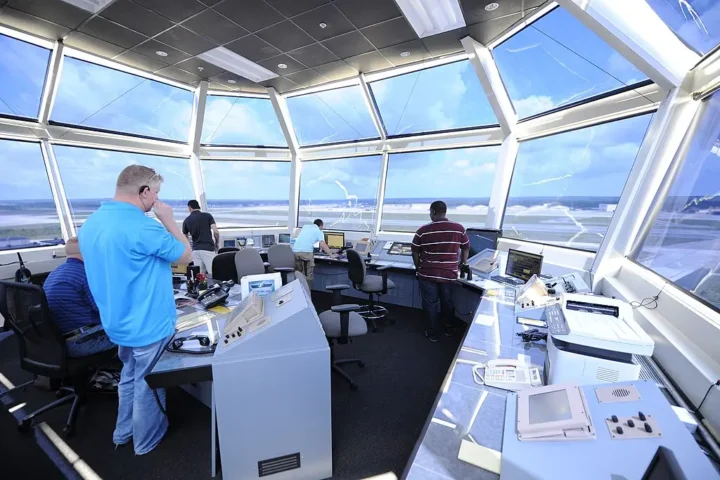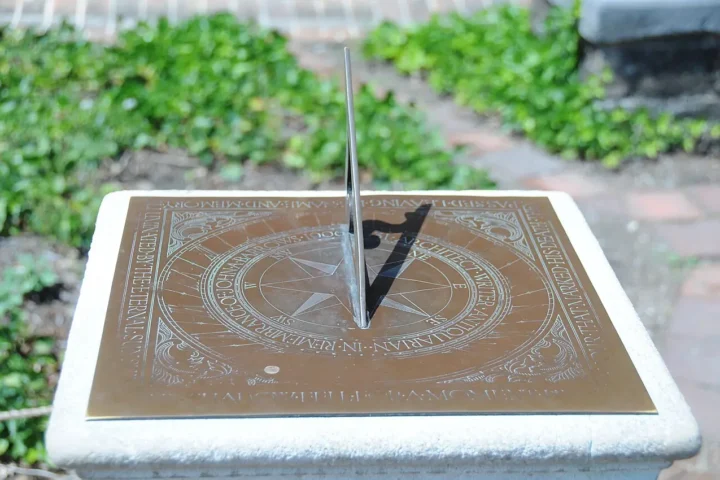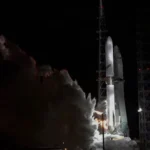NASA’s newest solar observatory has captured something remarkable – a rainbow in space. But unlike the colorful arcs we see after rain on Earth, this cosmic light show reveals hidden details about our Sun’s behavior.
Similar Posts
The image, taken on April 18, 2025, comes from NASA’s PUNCH mission – four small satellites working together to study how the Sun affects our solar system. While testing its cameras, one of PUNCH’s instruments photographed what appears to be a rainbow-colored glow in space.
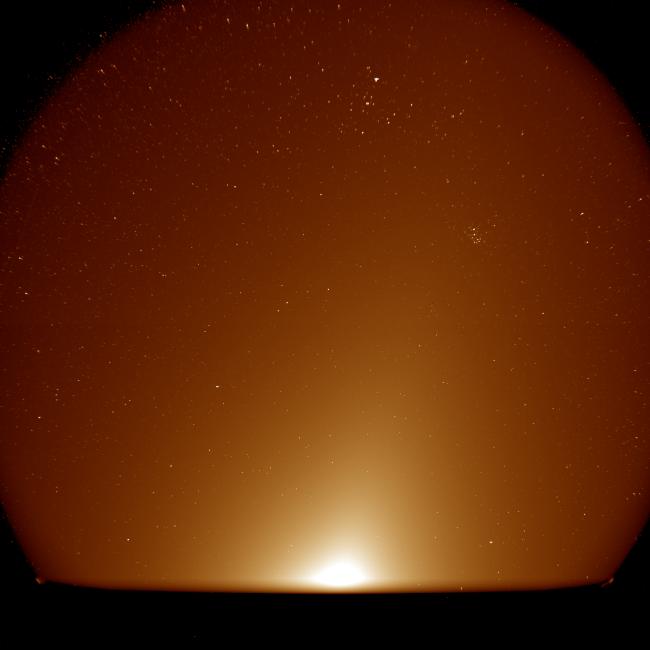
Captured on April 16, 2025, this is the first image taken by PUNCH’s WFI-1 instrument. The instrument’s wide field of view reveals the glow of zodiacal light stretching up and to the right. The V shape of the Hyades star cluster appears near the top, with the more compact Pleiades star cluster to the lower right. Photo Source: NASA/SWrI
What we’re seeing is sunlight bouncing off tiny dust particles floating between the planets, colored to show us how that light moves through space. The dust creating this effect comes from comets and asteroids, forming a faint glow astronomers call zodiacal light. On Earth, we sometimes see this as a dim triangle of light before sunrise or after sunset. PUNCH’s special cameras split this light into different colors, helping scientists track how the Sun’s energy flows through our solar system.
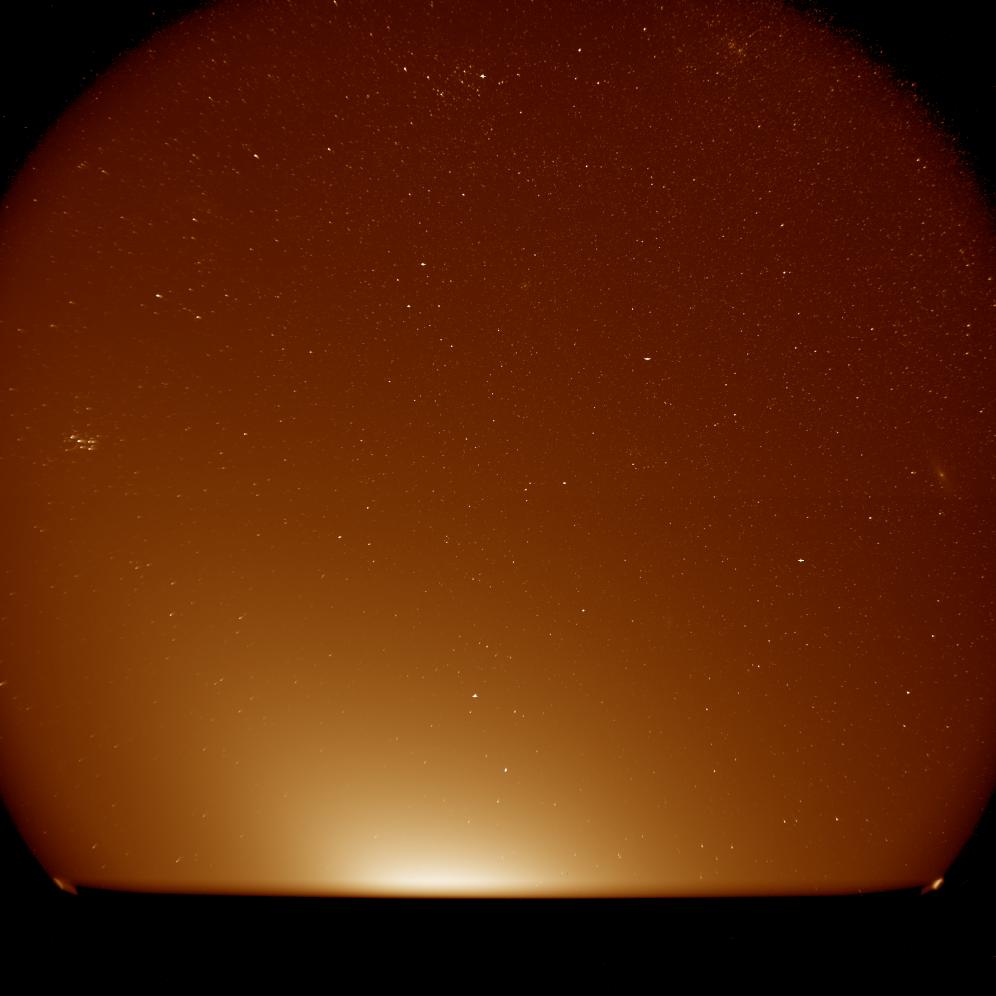
Captured on April 16, 2025, this is the first image taken by PUNCH’s WFI-3 instrument. The instrument’s wide field of view reveals the glow of zodiacal light stretching up and to the left. The Pleiades star cluster appears on the left, while the Andromeda galaxy appears as a faint fuzzy object on the far right. The constellation Cassiopeia (which looks like a stretched-out W) appears at the top.
Just two weeks earlier, PUNCH caught another striking view – an eerie image of the Moon passing in front of the Sun. Using a built-in light blocker called an occulter, the spacecraft can study the Sun’s outer atmosphere without being blinded by its intense brightness.
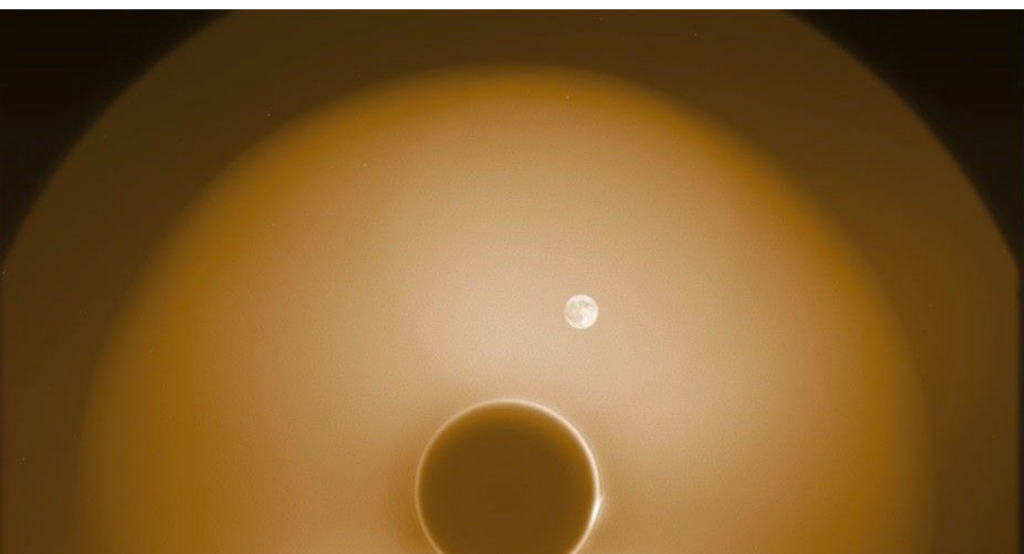
During commissioning, PUNCH’s NFI instrument captured this image of the new Moon as it passed by the Sun in the sky on April 27, 2025. The new Moon appears full, because it is illuminated by Earthshine (sunlight reflected off Earth). The image helped the PUNCH team confirm that the Moon will not obscure NFI’s view of the corona and solar wind. The dark circle near the bottom is the shadow of NFI’s occulter, which hides the Sun. The occulter, which was not yet fully aligned with the Sun, is surrounded by a narrow bright ring of diffracted light. Around that is a large, hazy circle of stray light glinting off the occulter (the Moon is inside that circle). Outside that is a small, dimmer region of the sky that is less affected by glint. Photo Source: NASA/SWrI
These images aren’t just for show. They’re helping scientists understand the solar wind – the Sun blasts more than 272,000 metric tons of material into space every second at speeds reaching 1.6 million kilometers per hour. This solar wind can affect satellites, power grids, and radio communications on Earth.
PUNCH is working alongside NASA’s Parker Solar Probe, which flies incredibly close to the Sun to take direct measurements. While Parker samples the solar wind up close, PUNCH watches how it spreads through space. Together, they’re giving scientists their most complete picture yet of how the Sun influences our cosmic neighborhood.

The mission launched on March 11, 2025, and is currently in its testing phase. Full science operations begin June 9, 2025, when PUNCH will start taking continuous images of the Sun and surrounding space. True to NASA’s commitment to open science, all these observations will be available for anyone to study.
This combination of cutting-edge technology and public access to scientific data marks an important step forward in our understanding of the Sun-Earth relationship. As these new images show, sometimes the most beautiful discoveries in space can also help us better protect our technology-dependent world from solar storms.
